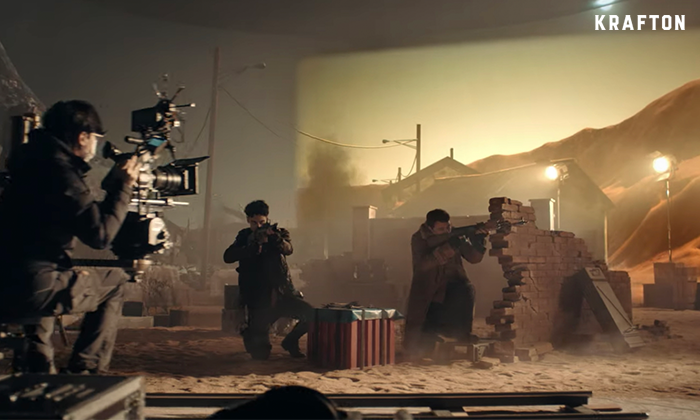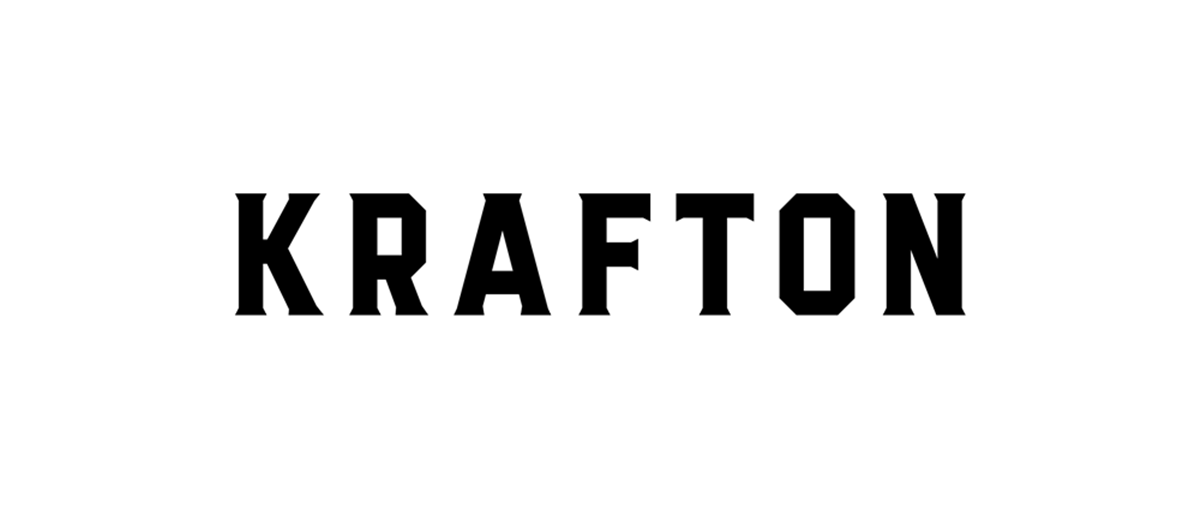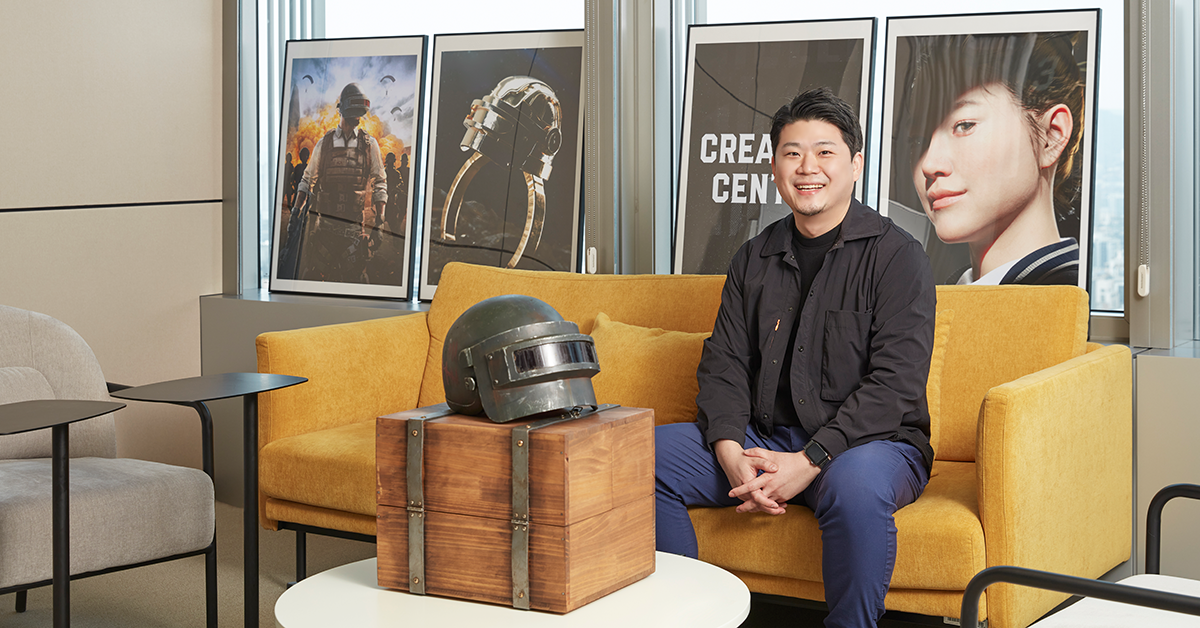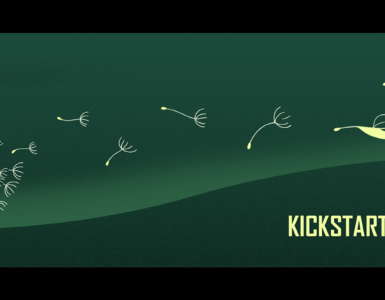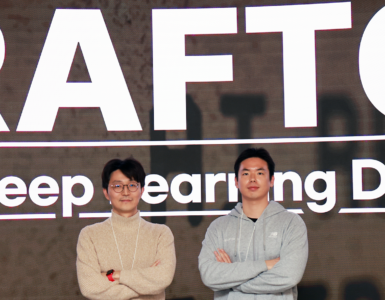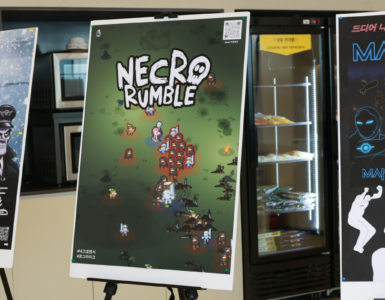An interview series of KRAFTON Creative Center – Pt. 1
How does creativity contribute to branding of a game company? The Creative Center in KRAFTON creates new values by combing games and new technologies while bringing life to its brand with fresh ideas and creativity. Read onto the following interview of Josh Shin, the head of Creative Center, and Hokyoung Kim, who leads Creative Project Management Part, to find out how they provide the fans with unforgettable experiences.
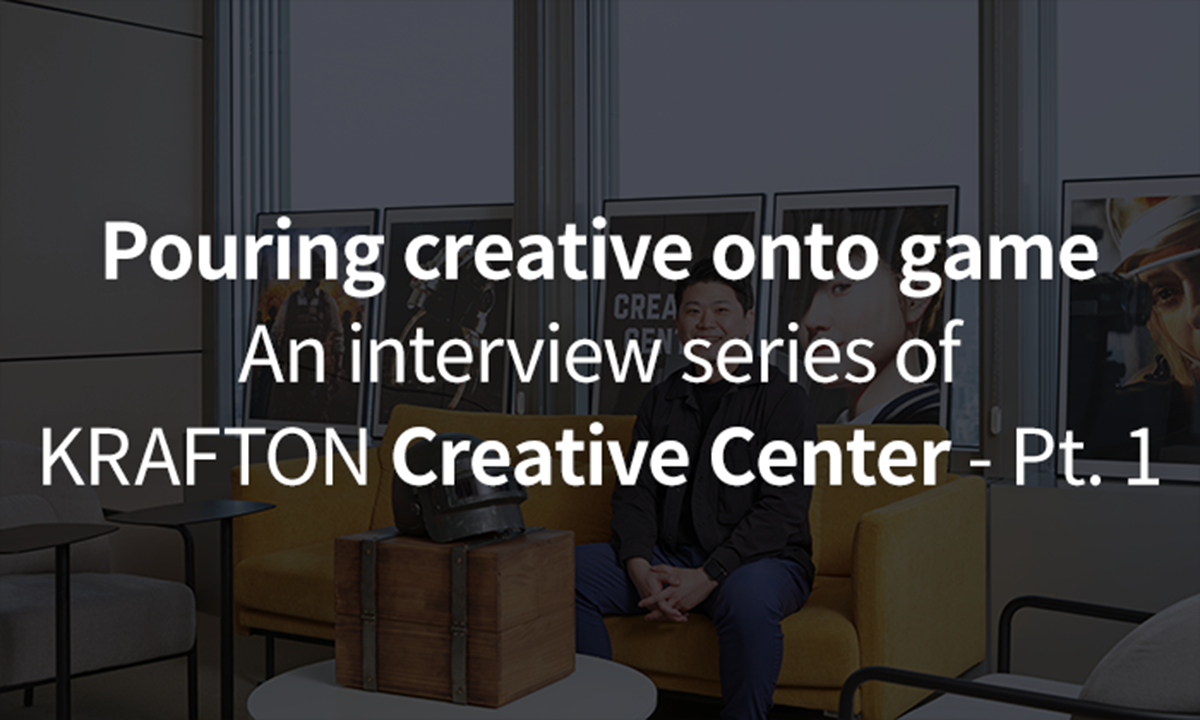
Nice to meet you! Could you please introduce yourself to our readers?
Josh Shin (Shin): Hi. I’m Josh Shin, the head of Creative Center in KRAFTON.
Hokyoung Kim (Kim): Hi. My name is Hokyoung Kim and I belong to Creative Project Management Part, Creative Center.
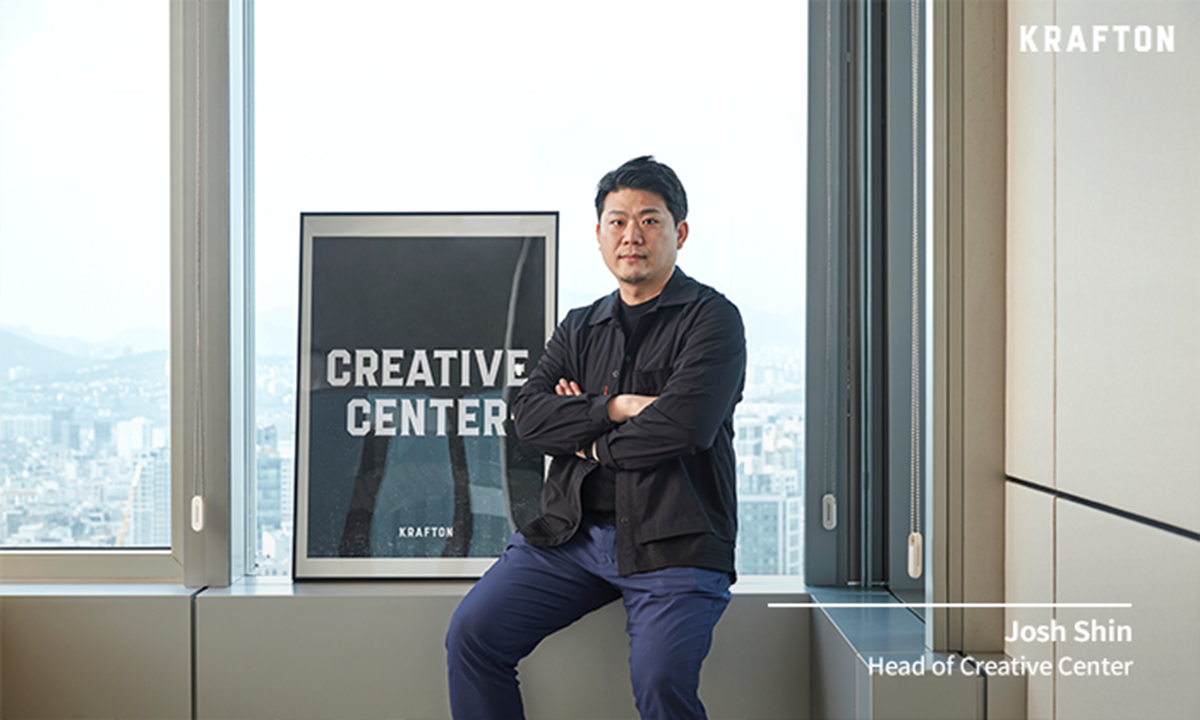
Could you elaborate on Creative Center for those who are unfamiliar with the organization?
Shin: To put it simply, it produces what we call “global creative contents” based on KRAFOTN’s diverse titles. We have two main roles. One as a creative agency and the other as a creative production. We manage creatives in general from concepts and production to feedbacks and analysis.
As Creative Center contains the word “creative,” it seems to have unique atmosphere.
Shin: You’re right. We pursue freedom while we work. Communication is crucial for new and creative ideas, so we try to make as many opportunities as possible to communicate with each other. But it’s not easy to force people to do this better. We often end up failing to break the ice even when we talk on important agendas. Therefore, we try to have gatherings more often just for small ideas as we believe something new comes out only when we continue to talk. As people in Creative Center are from many different countries, we can broaden our perspectives during the conversation.
You might have found good ideas at the meetings.
Shin: The PUBG: BATTLEGROUNDS dev team made a special mode named “POBG” for the April Fool’s Day last year, which was like an 8-bit arcade game, although the game is a hyper-realistic one. While we were ideating on this special mode, one suggested to build an actual arcade game machine for it. When interesting and crazy ideas appear, we try not to miss them and put them into practice without hesitation.
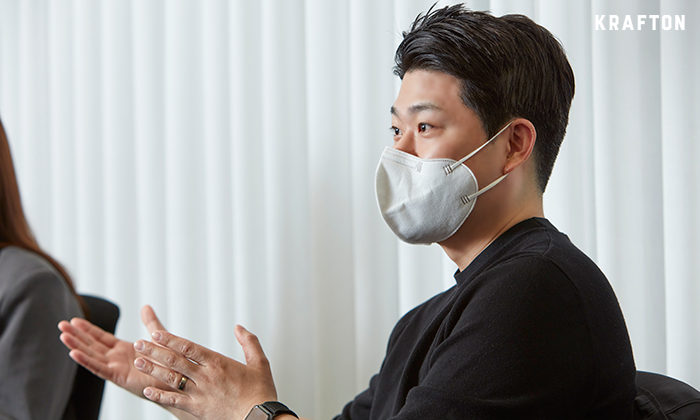
As the center deals with creativity, it seems to have unique culture and many distinct strengths.
Shin: Few game companies have such a large division dedicated to creatives. Particularly in Korea you can rarely find such an example. Creative Center works on a whole process from concepts and production to feedbacks and data analysis. A division performs as a creative agency and as a creative production at the same time like us is very exceptional.
It’s very special for the center to be involved in from planning ideas to development.
Shin: We make high-quality hyper-realistic contents, adding creative ideas on the resources from our games. For example, we produce virtual interactive contents such as opening trailers and cinematics. I guess there’s no other than us that work on creative using Unreal Engine. Being able to work on virtual humans and virtual production on our own is our strength.
As the center covers many areas including creativity, you must be working with colleagues from a variety of industries.
Shin: Absolutely. We have people who used to work in entertainment management agencies like YG Entertainment and SM Entertainment, those who worked in advertising agencies like Cheil Worldwide and Innocean, or in VFX studios. Of course, some worked in the game industry. For that reason, we respect diversity. I think we’re living in an era that requires mingling with various expertise rather than sticking into a specific field. Therefore, when we recruit a new hire, we prioritize new experiences he or she has.
Work with people from different areas itself must be a new experience.
Shin: Some work on branding, some do designs, some make cinematics, some create virtual human, and some manage projects. Although they appear to be doing something completely different, they are all connected somehow. Thanks to this connection, we can learn and get feedbacks from the colleagues with different experience and perspectives.
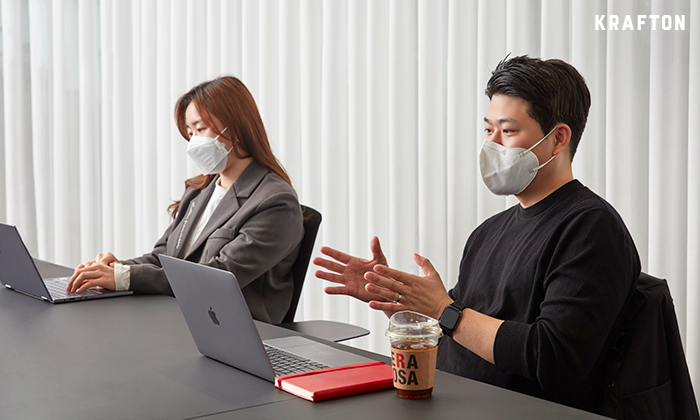
Among multiple organizations under Creative Center, what are the duties of Creative Strategy Team and Creative Project Management Part?
Kim: Creative Project Management Part oversees every project carried out at the center. We manage from the beginning of a project, follow up on it and eventually deliver it. It’s our job to arrange for tools and proposals for improvement that are necessary for projects. My part also supports communications between the teams under Creative Center or with partners outside KRAFTON. Creative Strategy Team gets insights from the analysis of contents data and draws out lessons learned.
Shin: Creative Strategy Team sets the vision and the road map in general while planning on how to project Creative Center’s ability. It figures out which content on our owned media like YouTube, Instagram and Facebook succeeds in drawing positive subscriber responses while checking exposure rates, bounce rates and watch time one by one, and sharing lessons learned we get from data analysis. It’s also the team’s job to inspect if Creative Center properly follows its strategies.
Do you have any memorable project collaborating with colleagues outside the division?
Shin: We rebranded the intellectual properties (IP) of PUBG: BATTLEGROUNDS last summer. As we created various contents such as logos, key art images and videos for the rebranding, we had to communicate with many other departments outside Creative Center. We also collaborated with the design team in Santa Monica office, which is a part of Creative Center. We were blessed with an extensive new experience while we discuss ideas and design contents with many artists in North America. At the end of the project, I was very satisfied with the result that we all achieved as one team.
Seoul is physically far away from Santa Monica and there’s also the time difference between the two cities. How do you work with your colleagues there?
Kim: We’ve had various types of regular online meetings like workshops, all-hands meetings, and brainstorming sessions even before the pandemic. We try to share even the smallest of things not to miss anything about the projects. As a project manager, communications are even more important to me since it’s my job to facilitate it between the colleagues.
Shin: Since we are working with the world’s best creators, it is essential for us to be able to communicate globally. And here’s what I’d like to boast about KRAFTON. We have a group of translators/interpreters inside the company. When the language barrier huddles us talking to their colleagues on international meetings or sending email to those with different mother tongue, those translators/interpreters support us so that we can avoid making errors and mistakes. Not many enterprises have such an in-house translator/interpreter team. I always feel grateful to them.
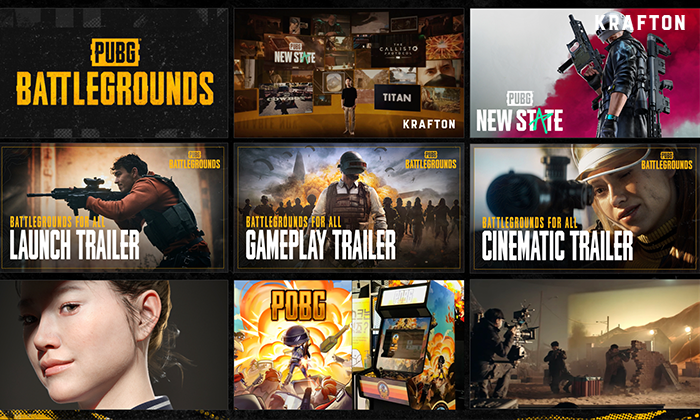
“To contribute to the brand and present the fans with unforgettable moments” is the center’s slogan. Could you elaborate on the unforgettable moments for the fans?
Shin: It literally means that we would like to produce contents that the fans love. Even a small icon can go viral if we make it based on the understanding on what the fans want. Therefore, when we make a content, we try to understand the fan communities and reflect various feedbacks from them. Our goal is to offer special experiences through the contents for the fans.
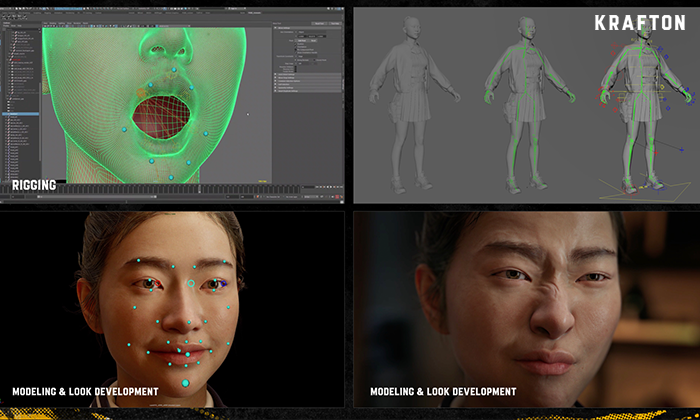
Apparently, you are making efforts for creative technologies. Why is that?
Shin: Some say that creative departments don’t have to care about technologies. But it’s not true. As things are changing very fast, various technologies are needed for creative contents. So, we try to make them, using Unreal Engine. It’s our goal to build an interactive virtual world step by step, producing the best hyper-realistic contents.
Why are you pushing for various new businesses in the visual interactive sector?
Shin: As mentioned, our motive is the responsibility to present memorable experiences to the fans. I think a new experience is as important and unforgettable as emotional and exciting experience.
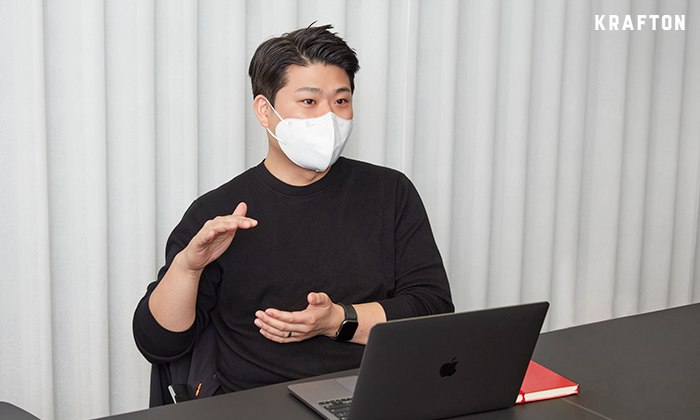
As you have various new plans, you must be seeking for new talents.
Kim: Definitely. We’re hiring Associate Creative Producer who works as an agency. One would lead contents design and production in Creative Production Team, working with various creators like producers and copywriters. Creative Project Manager in Creative Project Management Part would manage, schedule, and deliver every project Creative Center’s working on. Creative Project Manager should also prepare for tools, improve the process, and make strategies based on data.
What kind of people do you want to work with in Creative Center?
Kim: Communication skills are essential as we work internationally at Creative Center. As much as we weigh on global communication skills, we also want people who are meticulous, insightful, and intuitive in project management.
Shin: I value open-minded attitude the most, a kind of mindset that enables you to keep up with the trends and suggest new ideas accordingly. It’s because everything changes very quickly these days. I also want people who can carry out things into practice, helping us follow the trends. As we at Creative Center create hundreds of contents, every single of us should have the sense of ownership of the projects. It’s important to make challenges new stuff as project leader.
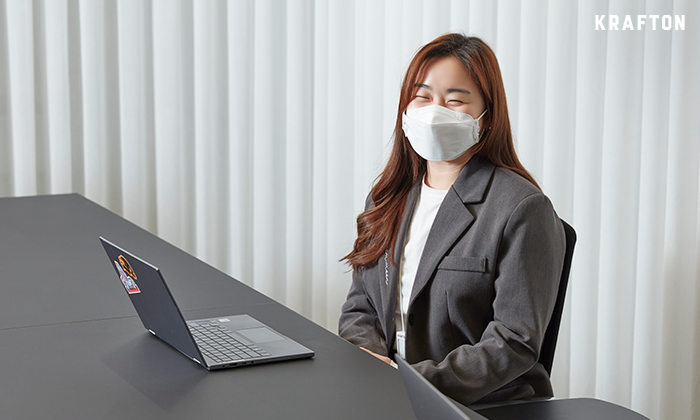
What kind of new challenges do you plan this year with your new colleagues?
Shin: First, I want to produce unprecedented creatives that don’t just fit into one genre box. Second, I want to be able to have a conversation with the virtual human that we’re working on. I hope to make it to the level of sharing ideas like we do with one of our members.
Kim: Project management team rarely belongs to a creative organization. So, as a project leader, I want to build a proper structure and process that make high-quality collaboration between the artists and the staffs possible.
What’s the ultimate goal of Creative Center?
Shin: One of the strategic goals in the short term is to produce global entertainment creatives, reinforcing our competency with Creative Tech. In a longer-term perspective, I hope everyone in Creative Center happy. To be happy at work, we should be satisfied with our work. I frequently ask my colleagues, “What do you want to challenger for?” Because it’s a question that can lead to the creation of creatives that make us all happy and feel proud of.
